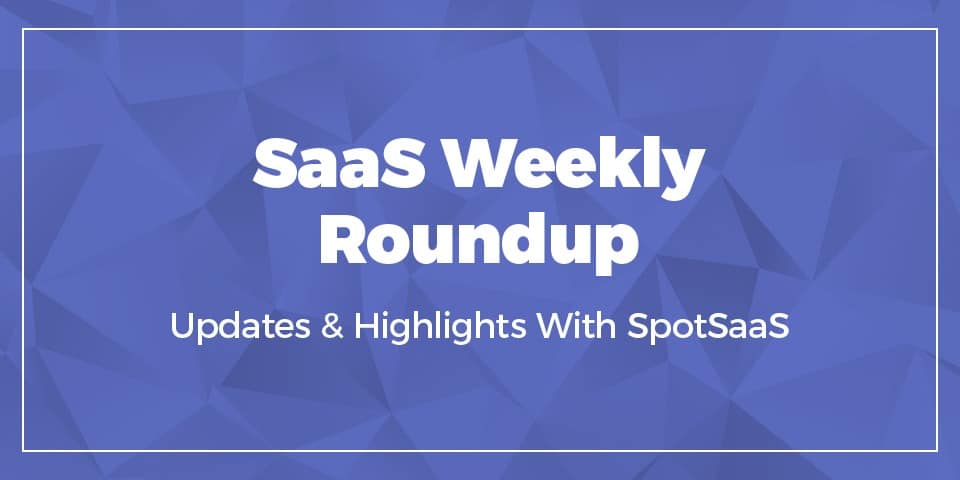Choosing the right mobile device management (MDM) software for your organization can seem daunting. With an array of options available, each with its unique features and functionalities, making a decision becomes quite challenging.
Our insightful blog post will provide you with tips on how to identify the best MDM solutions that match your specific needs and preferences.
What is Mobile Device Management Software?
Mobile Device Management Software, commonly known as MDM software, is a technology that allows organizations to control and manage mobile devices within their network. It provides a centralized platform for IT administrators to monitor and regulate devices, ensuring security and compliance measures are in place.
With the increasing use of smartphones and tablets in the workplace, MDM software has become crucial for businesses to protect sensitive data and streamline device management processes.
Definition
Mobile Device Management Software is a tool. It helps to keep track of all mobile devices in a company. This software makes sure that the devices are safe and follow the rules. It can be used on phones, tablets, or other gadgets that use wireless connections.
This tool lets you control access to company data from these devices too.
Common features
Mobile Device Management Software has many parts. These are some key features to know.
- It lets you add and set up devices fast.
- It keeps your data safe and follows rules.
- You can manage all the apps from one place.
- If a device gets lost or stolen, you can remove all data or lock it from far away.
- It shows real-time updates on all your mobile devices.
- It works well with different kinds of mobile devices.
- Some software offers both cloud-based services and on-premises options.
- Many providers give free trial access so you can try before you buy.
- An easy-to-use interface makes it simple for everyone in your team to use the software.
Why it’s important for organizations
Organizations need mobile device management software for many reasons. Most people in a company use mobile devices to get work done. This makes it hard for teams to keep things safe and smooth.
Mobile device management (MDM) helps with this heavy task.
MDM lets companies watch, manage, and secure their workers’ mobile devices from one place. It ensures all devices meet the rules set by the business – no matter where they are used or who owns them.
MDM also keeps important data safe on each device with security features like lock or wipe tools.
Keeping track of all these devices can be tough without MDM software. Such a program also gives workers quick access to company apps and info on their mobiles which skyrockets productivity while keeping everything secure at the same time!
How to Choose the Right Mobile Device Management Software
To choose the right mobile device management software, begin by identifying your organization’s specific needs and requirements. Consider factors such as the number of devices you need to manage, the level of security required, and any compliance regulations that must be met.
Next, determine if the software is compatible with a variety of mobile devices, including both iOS and Android platforms. Additionally, consider your budget and pricing options, ensuring that the chosen software aligns with your financial capabilities.
It’s also important to look for integration capabilities with existing systems in order to streamline operations and avoid disruptions. By carefully assessing these factors, you can select a mobile device management software that meets all your organization’s needs and ensures efficient device management processes.
Identify your organization’s needs
To choose the best mobile device management software for your organization, it’s important to identify your specific needs. Consider factors such as the number of mobile devices you have and what operating systems they use.
Think about the level of security and compliance you require, as well as any specific features or functions you need, like app management or remote device lock. Understanding these needs will help you narrow down your options and find the mobile device management software that best fits your organization.
Determine compatibility with different mobile devices
To choose the best mobile device management software, it’s important to determine if it is compatible with different mobile devices. This means ensuring that the software can effectively manage and secure devices running on various operating systems, such as iOS and Android.
Compatibility also extends to different device models and versions. By selecting a software solution that is compatible with a wide range of mobile devices, organizations can ensure seamless management and security across their entire fleet of devices.
Consider budget and pricing options
When choosing mobile device management software, it’s important to consider your budget and pricing options. Look for software that offers affordable plans or pricing models that fit your organization’s needs.
Some providers offer different tiers based on the number of devices or users you have, so make sure to evaluate how much you’re willing to spend and what features are included in each plan.
Additionally, consider any additional costs such as implementation fees or ongoing maintenance charges. By considering your budget and pricing options upfront, you can find a mobile device management software that not only meets your organization’s needs but also fits within your financial constraints.
Look for integration with existing systems
Ensure that the mobile device management software you choose can easily integrate with your organization’s existing systems. This will allow for seamless communication and data sharing between different platforms, making it easier to manage and monitor all devices in one central location.
By having integration capabilities, you can streamline processes and maximize efficiency within your organization. Additionally, integration with existing systems ensures a smooth transition and minimizes disruption when implementing the new mobile device management software.
Basic Features of Mobile Device Management Software
Mobile Device Management Software offers a range of essential features for organizations, including device enrollment and configuration, security and compliance management, application management, as well as remote wipe/lock capabilities.
Device enrollment and configuration
Mobile device management software helps organizations enroll and configure devices easily. Here are some important features related to device enrollment and configuration:
| Feature | Description |
|---|---|
| Simplified Enrollment Process | Streamlined process for users to easily enroll their mobile devices into the management system. |
| Over-the-Air Provisioning | Remote provisioning of device settings, configurations, and applications to enrolled devices without physical interaction. |
| User-friendly Interface | Intuitive and user-friendly interface for administrators and end-users to navigate the enrollment process. |
| Bulk Enrollment | Support for bulk enrollment, enabling administrators to enroll multiple devices simultaneously. |
| Configuration Management | Centralized management of device configurations, ensuring consistent settings across all enrolled devices. |
| Customizable Policies | Creation of policies based on organization requirements for passcodes, app restrictions, VPN settings, and more during device enrollment. |
| Over-the-Air Updates | Facilitation of over-the-air updates for device configurations and policy changes to ensure devices always have the latest settings without physical access. |
Security and compliance management
Mobile device management software plays a crucial role in ensuring the security and compliance of an organization’s mobile devices. Here are some key features related to security and compliance management that you should consider when choosing the best mobile device management software:
| Feature | Description |
|---|---|
| Secure Device Enrollment | Ensures a secure enrollment process, allowing only authorized devices to access the organization’s network. |
| Data Encryption | Supports data encryption on devices to protect sensitive information from unauthorized access. |
| Password Policies | Enables the establishment of strong password policies, including length, complexity, and expiration dates for enhanced security. |
| Remote Locking/Wiping | Allows remote locking or wiping of devices in case of loss or theft to prevent unauthorized access to sensitive data. |
| Compliance Monitoring | Provides capabilities for compliance monitoring, enabling the enforcement of industry-specific policies and regulations. |
| Application Whitelisting/Blacklisting | Offers control over which applications can be installed on managed devices through whitelisting (approved apps) or blacklisting (blocked apps). |
| Network Access Control | Establishes secure connections between managed devices and the organization’s network to allow access only for authorized users. |
| Audit Logs and Reporting | Provides comprehensive audit logs and reporting capabilities for tracking device usage, security incidents, and compliance violations. |
Application management
Application management is an important feature to consider when choosing mobile device management software. With application management, you can have better control over the apps installed on your mobile devices. Here are some key aspects of application management to look for in MDM software:
| Aspect | Description |
|---|---|
| App Distribution | MDM software should enable easy app distribution and installation on multiple devices for efficient app management. |
| App Updates | Choose MDM software that provides real-time app updates to keep apps current with the latest features, bug fixes, and security patches. |
| App Inventory | Essential for visibility into installed apps on each device, allowing comprehensive app inventory management and tracking of installed applications. |
| App Restrictions | Some MDM software allows setting app restrictions based on user roles or device types to control app access and prevent the installation of specific applications for security reasons. |
| App Blacklisting/Whitelisting | MDM software should offer the ability to create lists of allowed (whitelisted) or blocked (blacklisted) applications, providing control over the types of apps allowed on organization’s devices. |
Remote wipe/lock capabilities
Mobile device management software offers remote wipe/lock capabilities, which are essential for organizations to protect sensitive data in case a device is lost or stolen. These capabilities enable administrators to remotely erase all the data on a device or lock it to prevent unauthorized access. With remote wipe/lock, organizations can ensure that confidential information remains secure and minimize the risk of data breaches. This feature provides an added layer of security and control over mobile devices, allowing administrators to take immediate action in case of any security threat.
Conclusion
To recap, choosing the best mobile device management software requires careful consideration of your organization’s needs. Assessing factors like compatibility with different devices, budget and pricing options, integration with existing systems, and key features such as device enrollment/configuration, security/compliance management, application management, and remote wipe/lock capabilities are essential.
By evaluating these aspects and comparing different options available on the market like Scalefusion, Esper, Kandji, Hexnode, and ManageEngine Mobile Device Manager Plus, you can make an informed decision to simplify device management and enhance security for your organization’s mobile devices.
Author
-
Anisha Jain, a dynamic professional in the sports SaaS industry, transitioned from economics to digital marketing, driven by her passion for content writing. Her tenure at TBC Consulting culminated in her role as CEO, where she honed her skills in digital strategy, branding, copywriting, and team management. Anisha's expertise encompasses various aspects of digital marketing, including 360-degree marketing, digital growth consulting, client communication, and business development, making her a versatile asset in the SaaS domain.
View all posts


